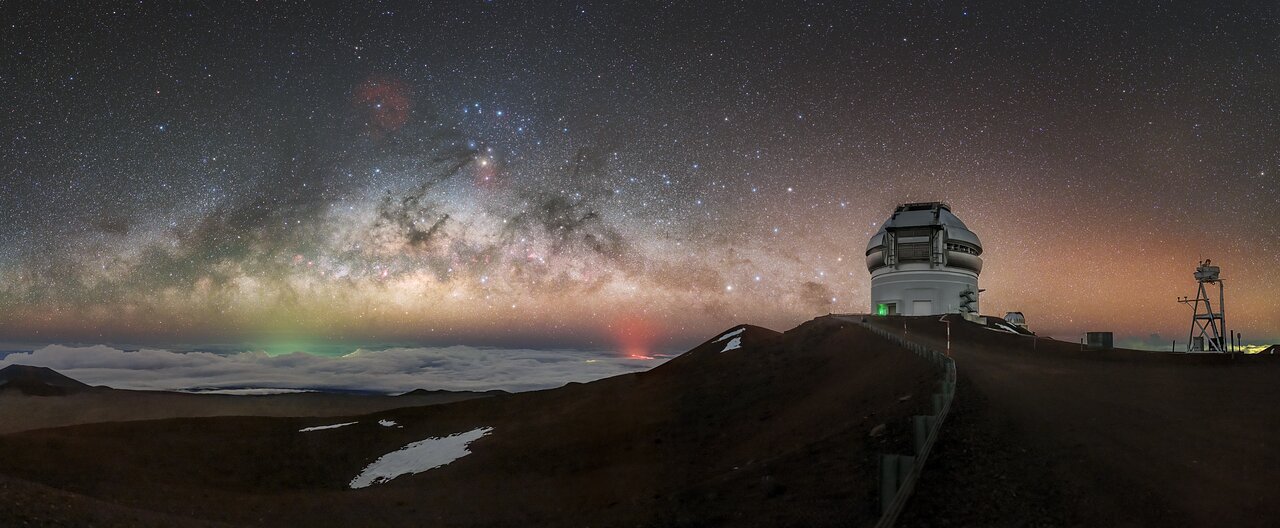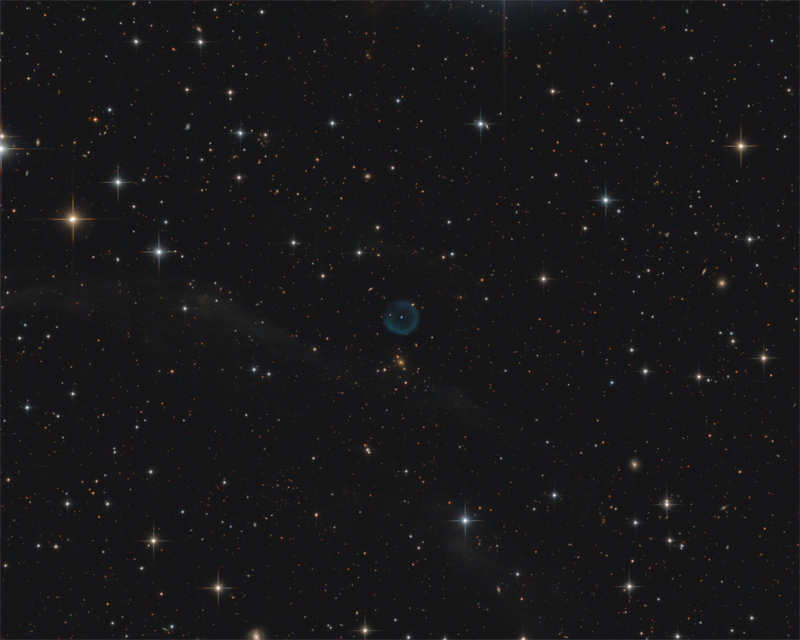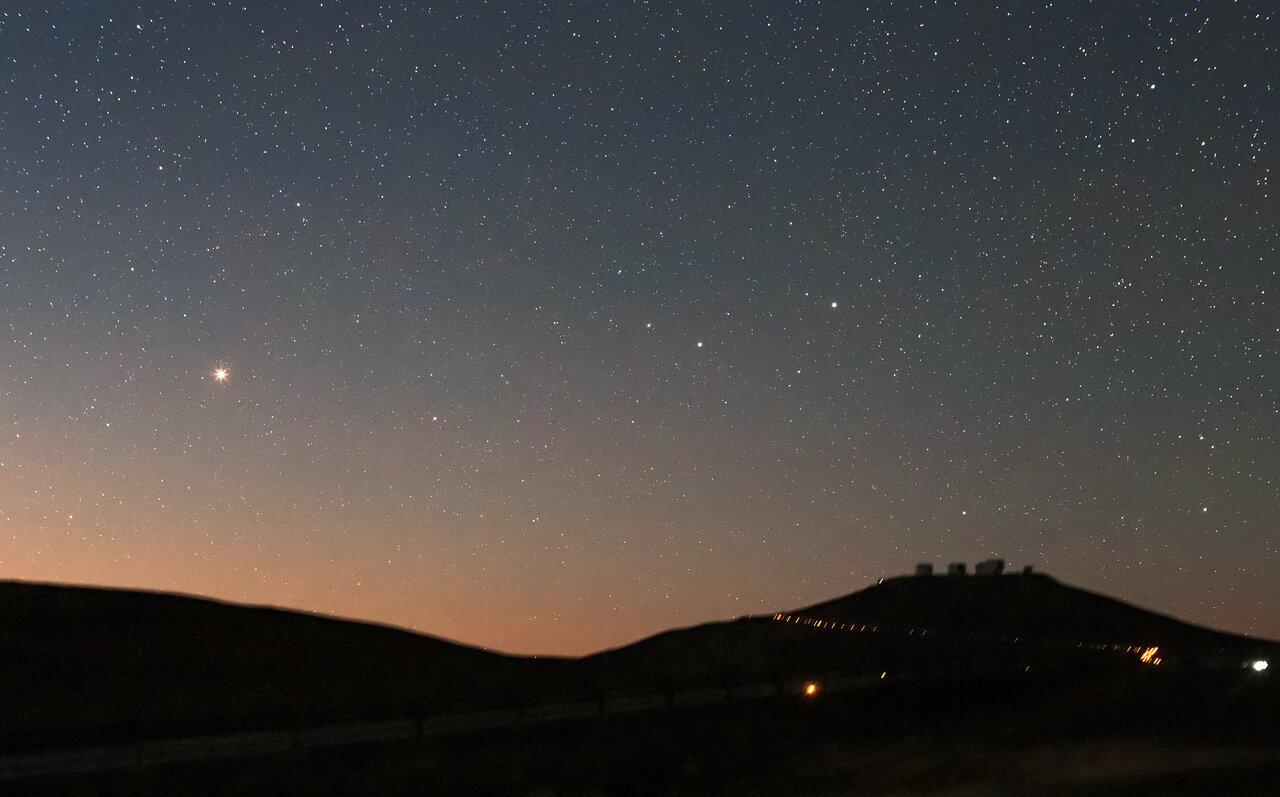Found Images: 2022 July
Found Images: 2022 July
Have you seen a great image or video somewhere that you think would make a great APOD? Nominate it for APOD! Please post as much information here as you have about the image/video with a link to any source(s) for it you know of here, and the editors will take a look.
When posting the image itself, please do not post anything larger than a thumbnail here; please honor the copyright holder's copyright.
Please keep hotlinked images under 500K.
Thank you!
<< Previously
Know the quiet place within your heart and touch the rainbow of possibility; be
alive to the gentle breeze of communication, and please stop being such a jerk. — Garrison Keillor
alive to the gentle breeze of communication, and please stop being such a jerk. — Garrison Keillor
-
starsurfer
- Stellar Cartographer
- Posts: 5409
- Joined: Thu Mar 15, 2012 7:25 pm
-
starsurfer
- Stellar Cartographer
- Posts: 5409
- Joined: Thu Mar 15, 2012 7:25 pm
Re: Found Images: 2022 July
NGC 1760
https://www.chart32.de/index.php/component/k2/item/288
Copyright: CHART32
Processing: Bernd Flach-Wilken
https://www.chart32.de/index.php/component/k2/item/288
Copyright: CHART32
Processing: Bernd Flach-Wilken
-
starsurfer
- Stellar Cartographer
- Posts: 5409
- Joined: Thu Mar 15, 2012 7:25 pm
Re: Found Images: 2022 July
HDW 2
http://www.capella-observatory.com/Imag ... h2-200.htm
Copyright: Josef Pöpsel, Stefan Binnewies and Frank Sackenheim
http://www.capella-observatory.com/Imag ... h2-200.htm
Copyright: Josef Pöpsel, Stefan Binnewies and Frank Sackenheim
ESO: Meteor Shower in the Chilean Desert
Meteor Shower in the Chilean Desert
ESO Picture of the Week | 2022 Jul 04
ESO Picture of the Week | 2022 Jul 04
The Eta Aquariids meteor shower, which peaked in early May this year, was captured in this stunning image by astrophotographer Petr Horálek. It was taken near San Pedro de Atacama, a Chilean town about 50 km away from the Chajnantor observatory site, where APEX and ALMA, astronomical facilities co-owned by ESO, are located. The Eta Aquariids meteors are caused by leftover debris from Halley’s comet and make up the bright, arrow-like darts of light in the photo. But don’t stop there: this image is literally full to the brim of astronomical phenomena.Image Credit: ESO/Petr Horalek
The luminous object towards the bottom of the sky is Venus. Above it, arranged in a satisfying line, are several planets in conjunction. Directly above Venus is Jupiter, followed by the bright red Mars, and then Saturn. Conjunctions such as this are rare, often occurring decades apart. The planets also trace the zodiacal light, the faint glow stretching like a pillar, up towards the bright stellar-dense centre of the Milky Way, our home galaxy.
Zodiacal light is often seen from dark sites like ESO observatories just after sunset, or before sunrise, and is the reflected sunlight from dust particles in the plane of the Solar System. The dust comes from asteroids, passing comets, and even from other inner Solar System planets, such as Mars. Here we see the zodiacal light paired with the red sunset over the mountains and volcanoes surrounding the Chajnantor site, a spectacular backdrop to this dreamy night sky.
Know the quiet place within your heart and touch the rainbow of possibility; be
alive to the gentle breeze of communication, and please stop being such a jerk. — Garrison Keillor
alive to the gentle breeze of communication, and please stop being such a jerk. — Garrison Keillor
ESA: Hubble Spies a Galactic Gem
Hubble Spies a Galactic Gem (CGCG 396-2)
ESA Hubble Picture of the Week | 2022 Jul 04
ESA Hubble Picture of the Week | 2022 Jul 04
This NASA/ESA Hubble Space Telescope observation has captured the galaxy CGCG 396-2, an unusual multi-armed galaxy merger which lies around 520 million light-years from Earth in the constellation Orion.
This observation is a gem from the Galaxy Zoo project, a citizen science project in which hundreds of thousands of volunteers classified galaxies to help scientists solve a problem of astronomical proportions — how to sort through the vast amounts of data generated by robotic telescopes. Following a public vote, a selection of the most astronomically intriguing objects from the Galaxy Zoo were selected for follow-up observations with Hubble. CGCG 396-2 is one such object, and was captured in this image by Hubble’s Advanced Camera for Surveys.
The Galaxy Zoo project originated when an astronomer was set an impossibly mind-numbing task; classifying more than 900 000 galaxies by eye. By making a web interface and inviting citizen scientists to contribute to the challenge, the Galaxy Zoo team was able to crowdsource the analysis, and within six months a legion of 100 000 volunteer citizen astronomers had contributed more than 40 million galaxy classifications.
Since its initial success, the Galaxy Zoo project and its successor projects have contributed to more than 100 peer-reviewed scientific articles and led to a rich variety of intriguing astronomical discoveries above and beyond their initial goals. The success of the project also inspired more than 100 citizen science projects on the Zooniverse portal, ranging from analysing data from the ESA Rosetta spacecraft's visit to Comet 67P/Churyumov–Gerasimenko to counting killer whales around remote Alaskan islands!
Know the quiet place within your heart and touch the rainbow of possibility; be
alive to the gentle breeze of communication, and please stop being such a jerk. — Garrison Keillor
alive to the gentle breeze of communication, and please stop being such a jerk. — Garrison Keillor
Re: Found Images: 2022 July
I’ve started to use 300s subs instead of the usual 180s subs that I have been using. I would say that they both come out almost identical in the processing. The biggest difference is the reduction of the amount of time that the computer has to chew on the data.
Target: IC-1396 The Elephant's Truck
Imaging Telescope: Explore Scientific ED127 CF
Imaging Camera: ZWO ASI2600MM-Pro
Guide Scope: Explore Scientific ED127 CF
Guide Camera: ZWO 290mm-Mini
Mount: Sky Watcher EQ8-R Pro
Polar Alignment: ASIAir Plus
Bortle Class: 6
Filters: Chroma 3nm
18 x 300s (Ha)
18 x 300s (SII)
18 x 300s (OIII)
Integration: PixInsight
04 Jul 2022
Full Res: https://astrob.in/dqbipv/0/
Target: IC-1396 The Elephant's Truck
Imaging Telescope: Explore Scientific ED127 CF
Imaging Camera: ZWO ASI2600MM-Pro
Guide Scope: Explore Scientific ED127 CF
Guide Camera: ZWO 290mm-Mini
Mount: Sky Watcher EQ8-R Pro
Polar Alignment: ASIAir Plus
Bortle Class: 6
Filters: Chroma 3nm
18 x 300s (Ha)
18 x 300s (SII)
18 x 300s (OIII)
Integration: PixInsight
04 Jul 2022
Full Res: https://astrob.in/dqbipv/0/
Re: Found Images: 2022 July
This target is one of the reasons that I got into astrophotography. The first time I saw the famous Hubble picture, I’ve always wanted to be able to capture a photo of it myself.
Target: M-16 The Eagle Nebula and Pillars of Creation
Imaging Telescope: Explore Scientific ED127 CF
Imaging Camera: ZWO ASI2600MM-Pro
Guide Scope: Explore Scientific ED127 CF
Guide Camera: ZWO 290mm-Mini / ZWO OAG-L
Mount: Sky Watcher EQ8-R Pro
Polar Alignment: ASIAir Plus
Bortle Class: 6
Filters: Chroma 3nm
75 x 180s (Ha)
52 x 180s (OIII)
30 x 180s (SII)
36 x 300s (SII)
Integration: PixInsight
25/26/28 Jun 2022
01 Jul 2022
Woodbridge, VA
Full Res: https://astrob.in/e7fh3s/0/
Target: M-16 The Eagle Nebula and Pillars of Creation
Imaging Telescope: Explore Scientific ED127 CF
Imaging Camera: ZWO ASI2600MM-Pro
Guide Scope: Explore Scientific ED127 CF
Guide Camera: ZWO 290mm-Mini / ZWO OAG-L
Mount: Sky Watcher EQ8-R Pro
Polar Alignment: ASIAir Plus
Bortle Class: 6
Filters: Chroma 3nm
75 x 180s (Ha)
52 x 180s (OIII)
30 x 180s (SII)
36 x 300s (SII)
Integration: PixInsight
25/26/28 Jun 2022
01 Jul 2022
Woodbridge, VA
Full Res: https://astrob.in/e7fh3s/0/
-
starsurfer
- Stellar Cartographer
- Posts: 5409
- Joined: Thu Mar 15, 2012 7:25 pm
-
starsurfer
- Stellar Cartographer
- Posts: 5409
- Joined: Thu Mar 15, 2012 7:25 pm
-
starsurfer
- Stellar Cartographer
- Posts: 5409
- Joined: Thu Mar 15, 2012 7:25 pm
NOIRLab: A Bright Night over Gemini North
A Bright Night over Gemini North
NOIRLab Image of the Week | 2022 Jul 06
NOIRLab Image of the Week | 2022 Jul 06
There’s more going on in this picture than you might think. This image shows Gemini North, located on Maunakea in Hawai‘i. Gemini North is one half of the International Gemini Observatory, a Program of NSF’s NOIRLab.
To the lower left of Gemini is a red glowing light source. This is from the eruption of the Halemaʻumaʻu crater of the Kīlauea volcano, ongoing since late September 2021.
Further lower left of Gemini is the faint green light of Hilo, Hawai‘i, mostly hidden by the layer of clouds that often covers the ground as seen from Maunakea. This is a form of light pollution, caused by excessive light shining up into the night sky above. However, protected by the high altitude, Gemini North is frequently shielded by a thick blanket of cloud. This barrier obscures urban light pollution and ambient natural light coming from the island and ocean below. ...
Know the quiet place within your heart and touch the rainbow of possibility; be
alive to the gentle breeze of communication, and please stop being such a jerk. — Garrison Keillor
alive to the gentle breeze of communication, and please stop being such a jerk. — Garrison Keillor
-
starsurfer
- Stellar Cartographer
- Posts: 5409
- Joined: Thu Mar 15, 2012 7:25 pm
Re: Found Images: 2022 July
NGC 6726
http://chamaeleon-observatory-onjala.de ... 6-2015.htm
Copyright: Franz Hofmann and Wolfgang Paech
http://chamaeleon-observatory-onjala.de ... 6-2015.htm
Copyright: Franz Hofmann and Wolfgang Paech
-
starsurfer
- Stellar Cartographer
- Posts: 5409
- Joined: Thu Mar 15, 2012 7:25 pm
-
starsurfer
- Stellar Cartographer
- Posts: 5409
- Joined: Thu Mar 15, 2012 7:25 pm
Re: Found Images: 2022 July
NGC 3132
https://www.chart32.de/index.php/component/k2/item/112
Copyright: CHART32
Processing: Johannes Schedler
https://www.chart32.de/index.php/component/k2/item/112
Copyright: CHART32
Processing: Johannes Schedler
-
starsurfer
- Stellar Cartographer
- Posts: 5409
- Joined: Thu Mar 15, 2012 7:25 pm
ESO: Mars Near and Far (Paranal)
Mars Near and Far
ESO Picture of the Week | 2022 Jul 11
ESO Picture of the Week | 2022 Jul 11
This photo shows a peaceful night above ESO’s Paranal Observatory in Chile’s Atacama Desert. Most striking is the bright reddish spot in the centre-left of the sky: Mars.
Silhouetted against the starry sky is ESO’s Very Large Telescope (VLT), on the hill to the right. We can see the domes of the four 8.2-m Unit Telescopes, as well as the smaller VLT Survey Telescope (VST) at the right edge of the hill.
Speaking of Mars, did you know that the landscape around Paranal looks uncannily martian? So much so that the European Space Agency sometimes sends prototype rovers to simulate missions in a realistic environment.
Know the quiet place within your heart and touch the rainbow of possibility; be
alive to the gentle breeze of communication, and please stop being such a jerk. — Garrison Keillor
alive to the gentle breeze of communication, and please stop being such a jerk. — Garrison Keillor
ESA: Portrait of a Globular Cluster (Terzan 2)
Portrait of a Globular Cluster
ESA Hubble Picture of the Week | 2022 Jul 11
ESA Hubble Picture of the Week | 2022 Jul 11
The globular cluster Terzan 2 in the constellation Scorpio features in this observation from the NASA/ESA Hubble Space Telescope. Globular clusters are stable, tightly gravitationally bound clusters of tens of thousands to millions of stars found in a wide variety of galaxies. The intense gravitational attraction between the closely packed stars gives globular clusters a regular, spherical shape. As a result, images of the hearts of globular clusters, such as this observation of Terzan 2, are crowded with a multitude of glittering stars.Image Credit: ESA/Hubble & NASA, R. Cohen
Hubble used both its Advanced Camera for Surveys (ACS) and its Wide Field Camera 3 (WFC3) in this observation, taking advantage of the complementary capabilities of these instruments. Despite having only one primary mirror, Hubble’s design allows multiple instruments to be used to inspect astronomical objects. Light from distant astronomical objects enters Hubble and is collected by the telescope's 2.4-metre primary mirror; it is then reflected off the secondary mirror into the depths of the telescope, where smaller mirrors can direct light into individual instruments.
Each of the four operational instruments on Hubble is a masterpiece of astronomical engineering in its own right, and contains an intricate array of mirrors and other optical elements to remove any aberrations or optical imperfections from observations, as well as filters which allow astronomers to observe specific wavelength ranges. The mirrors inside each instrument also correct for the slight imperfection of Hubble's primary mirror. The end result is a crystal-clear observation, such as this glittering portrait of Terzan 2.
Know the quiet place within your heart and touch the rainbow of possibility; be
alive to the gentle breeze of communication, and please stop being such a jerk. — Garrison Keillor
alive to the gentle breeze of communication, and please stop being such a jerk. — Garrison Keillor
-
starsurfer
- Stellar Cartographer
- Posts: 5409
- Joined: Thu Mar 15, 2012 7:25 pm
Re: Found Images: 2022 July
StDr Object 30
https://www.imagingdeepspace.com/stdr-object-30.html
Data: Peter Goodhew
Processing: Marcel Drechsler
https://www.imagingdeepspace.com/stdr-object-30.html
Data: Peter Goodhew
Processing: Marcel Drechsler
-
starsurfer
- Stellar Cartographer
- Posts: 5409
- Joined: Thu Mar 15, 2012 7:25 pm
NASA: Webb Delivers Deepest Infrared Image of Universe Yet
Webb Delivers Deepest Infrared Image of Universe Yet
NASA | GSFC | James Webb Space Telescope | 2022 Jul 11
NASA | GSFC | James Webb Space Telescope | 2022 Jul 11
NASA’s James Webb Space Telescope has produced the deepest and sharpest infrared image of the distant universe to date. Known as Webb’s First Deep Field, this image of galaxy cluster SMACS 0723 is overflowing with detail.
Thousands of galaxies – including the faintest objects ever observed in the infrared – have appeared in Webb’s view for the first time. This slice of the vast universe covers a patch of sky approximately the size of a grain of sand held at arm’s length by someone on the ground.
This deep field, taken by Webb’s Near-Infrared Camera (NIRCam), is a composite made from images at different wavelengths, totaling 12.5 hours – achieving depths at infrared wavelengths beyond the Hubble Space Telescope’s deepest fields, which took weeks.
The image shows the galaxy cluster SMACS 0723 as it appeared 4.6 billion years ago. The combined mass of this galaxy cluster acts as a gravitational lens, magnifying much more distant galaxies behind it. Webb’s NIRCam has brought those distant galaxies into sharp focus – they have tiny, faint structures that have never been seen before, including star clusters and diffuse features. Researchers will soon begin to learn more about the galaxies’ masses, ages, histories, and compositions, as Webb seeks the earliest galaxies in the universe.
This image is among the telescope’s first-full color images. The full suite will be released Tuesday, July 12, beginning at 10:30 a.m. EDT, during a live NASA TV broadcast.
Click to play embedded YouTube video.
Know the quiet place within your heart and touch the rainbow of possibility; be
alive to the gentle breeze of communication, and please stop being such a jerk. — Garrison Keillor
alive to the gentle breeze of communication, and please stop being such a jerk. — Garrison Keillor
- AVAO
- Commander
- Posts: 787
- Joined: Tue May 28, 2019 12:24 pm
- AKA: multiwavelength traveller
- Location: Zurich, Switzerland
Re: NASA: Webb Delivers Deepest Infrared Image of Universe Yet
At hubble invisible galaxies...
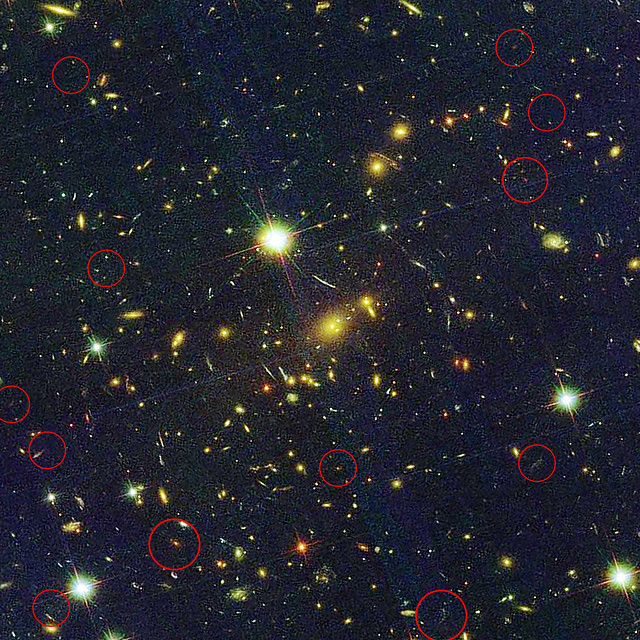
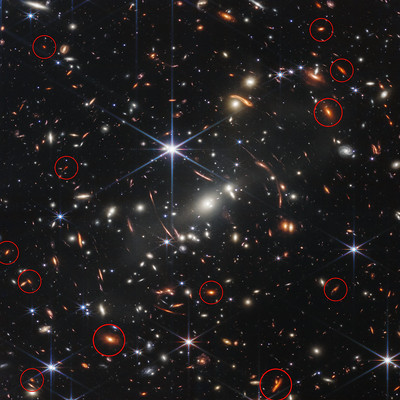
https://live.staticflickr.com/65535/522 ... 53d5_o.jpg
jac berne (flickr)
Re: NASA: Webb Delivers Deepest Infrared Image of Universe Yet
AVAO (or Jac, is that your name?), do you know if there is a larger version available of the Hubble image of the JWST field? I would love to compare the two images, but I need a larger version of the Hubble image to do it.AVAO wrote: ↑Tue Jul 12, 2022 6:14 amAt hubble invisible galaxies...
https://live.staticflickr.com/65535/522 ... 53d5_o.jpg
jac berne (flickr)
Ann
Color Commentator
- AVAO
- Commander
- Posts: 787
- Joined: Tue May 28, 2019 12:24 pm
- AKA: multiwavelength traveller
- Location: Zurich, Switzerland
Re: NASA: Webb Delivers Deepest Infrared Image of Universe Yet
Re: NASA: Webb Delivers Deepest Infrared Image of Universe Yet
Thanks! Interesting! So...AVAO wrote: ↑Tue Jul 12, 2022 8:49 amHi Ann
I found only one:
https://hla.stsci.edu/cgi-bin/display?c ... e=14096_z4
Jac
JWST deep field as seen by Hubble.
Color Commentator

